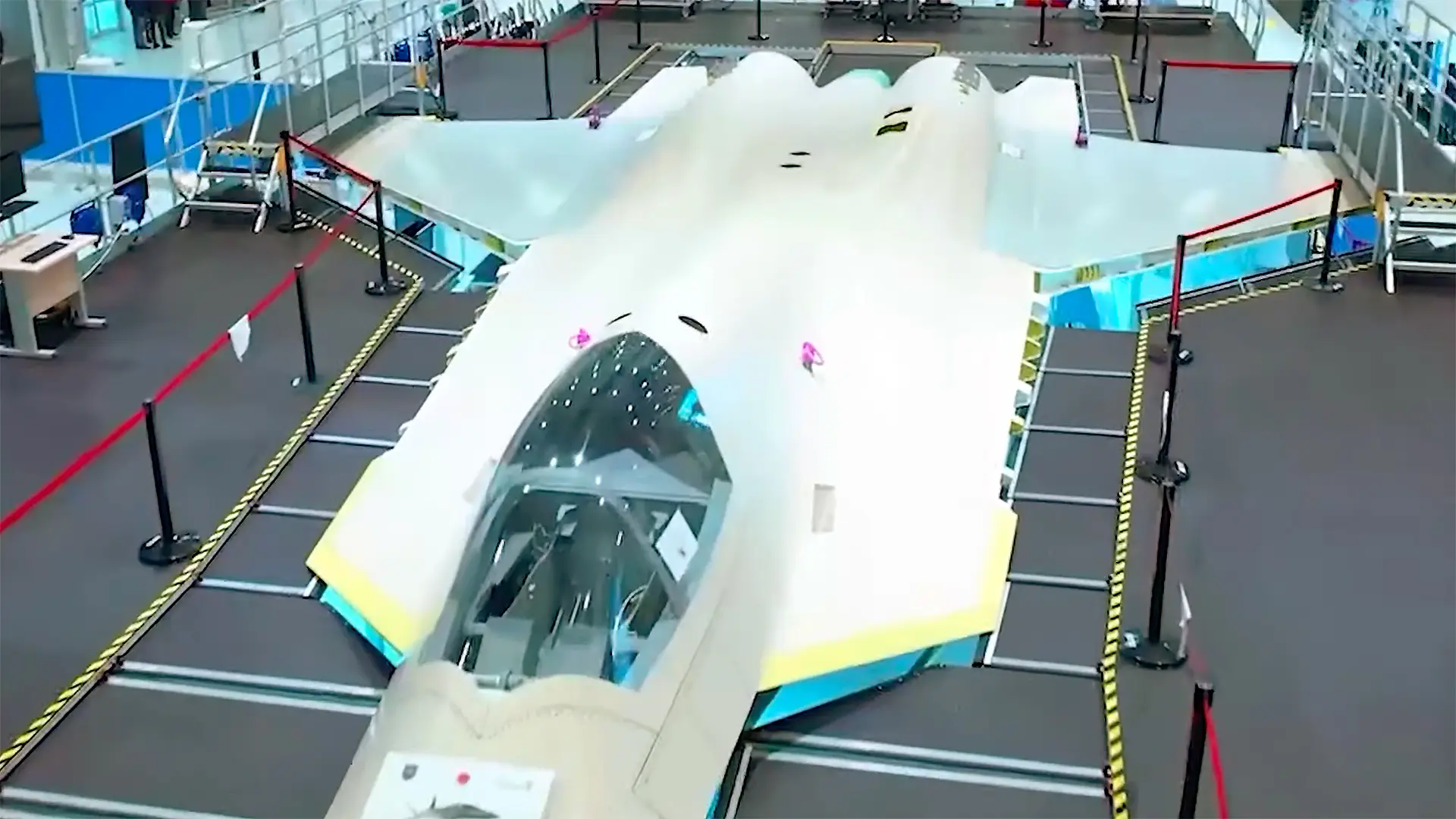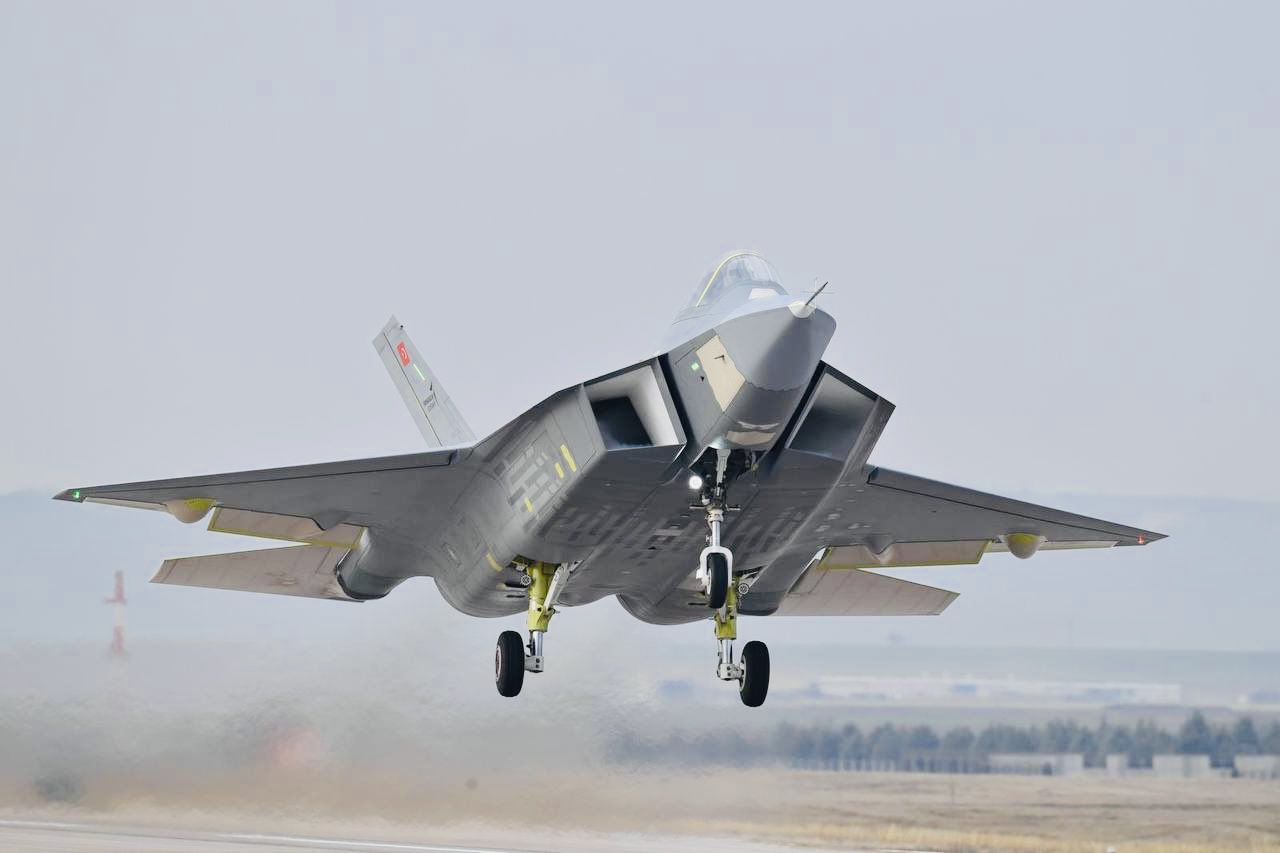Turkey’s Second ‘KAAN’ Prototype Nearly Complete, Set to Begin Comprehensive Flight Testing
On February 21, Turkey's fifth-generation fighter jet, named "KAAN," successfully completed its maiden flight, marking another milestone in the Mediterranean country's aviation and defense industry. This achievement positions Turkey among a select group of nations capable of developing fifth-generation fighter aircraft.
(DEFENCE SECURITY ASIA) — Turkish Aerospace Industries (TAI) is nearing completion of the second prototype of its fifth-generation fighter jet, KAAN, which it is developing to commence flight testing.
According to Avionot.com, assembly of the second KAAN prototype and engine integration are expected to be finalized in June and July.
Subsequently, this prototype will begin comprehensive flight tests followed by the other KAAN prototypes.
On February 21, the “KAAN” made its successful inaugural flight, marking another milestone in the Mediterranean country’s aviation and defense industry.
This flight also positions Turkey among a select group of nations capable of independently developing fifth-generation fighter aircraft.

“KAAN” joins other current fifth-generation aircraft in the market, such as the American F-22 “Raptor” and F-35, China’s J-20 “Mighty Dragon” and J-31, and Russia’s Su-57 “Felon.”
Turkey, a NATO member, initiated the development project for the fifth-generation fighter “KAAN” in 2016.
Ankara intensified efforts to develop its own fifth-generation fighter following its removal from the F-35 program, prompted by its decision to purchase the Russian S-400 “Triumf” air defense system.
As a former partner in the F-35 program, Turkey had agreed to acquire 100 units of the fighter from Lockheed Martin, but its participation was terminated following the S-400 purchase.
Previously known only as TF-X or Milli Muharip Ucak (National Combat Aircraft – MMU), nearly 100 percent of the Turkish fifth-generation aircraft has been developed domestically, except for certain components like the ejection seat, engine, and joystick.
However, these foreign components will be replaced with Turkish-made ones as the development progresses.

During the current flight testing phase, all KAAN prototypes will use GE’s F110 engines before a complete switch to a turbofan engine developed by local company TEI (TUSAS Engine Industries).
TEI, a joint venture between TAI and General Electric Aerospace, announced that the domestically produced engine designed for the fifth-generation fighter “KAAN” is nearly complete.
“The TF10000 engine, which will generate 6,000 lbf of thrust and will equip various manned and unmanned platforms including the KAAN fighter jet, is nearly ready,” said TEI chief, Mahmut Faruk Aksit.
He added that the TF10000 turbofan is the most powerful engine they have developed to date, an upgrade from the earlier TF6000.
Initial data indicates that the “KAAN” will have a Maximum Take-Off Weight (MTOW) of 27,200 kg and can reach a maximum speed of Mach 2.

TAI, the main contractor for the development of the fifth-generation fighter jet “KAAN,” is reported to deliver 20 KAAN Block 10 fighter jets to the Turkish Air Force by 2028.
By 2029, TAI is expected to produce two KAAN fighter jets per month, generating an estimated revenue of approximately $2.4 billion (RM9.6 billion) annually.
The fifth-generation KAAN jets are set to replace more than 200 of Turkey’s F-16 fighter jets. — DSA



Comments are closed.